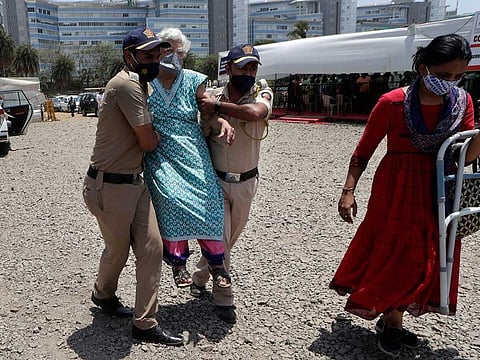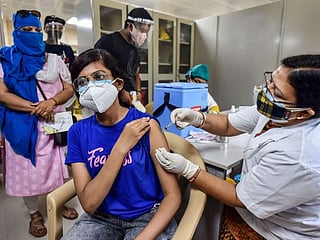SAARC could have helped South Asia contain COVID-19 crisis better
Failure of member states to hold a new Summit has made regional body more voiceless

Since the beginning of April 2021, while India is battling desperately to survive the terrible onslaught of the COVID-19 pandemic, the number of newly infected cases is also rising sharply in neighbouring South Asian countries. The severity of the pandemic in Nepal has already reached an alarming level. Its deposed king is down with coronavirus after returning from the Kumbha festival in India.
Bangladesh has been under the grip of the second wave since early March. After it closed the land border with India for people’s movement, the number of new cases in the country has reduced. Besides, Bangladesh, Nepal, Sri Lanka, and even Maldives have brought several restrictions on people travelling from India. Pakistan is quite anxious over the possibility of likely spillover of the pandemic across the border.
The cross-border consequences of the pandemic ask for collaborative action in the region. National policies and even subregional approaches are not enough considering the nature and power of the crisis. In this context, the South Asian Association for Regional Cooperation (SAARC) could have potentially taken a lead role; still, a once-in-a-century pandemic like this has even failed to wake it up from its coma.
To face the HIV/AIDS pandemic in Southern Africa and the Ebola Pandemic in West Africa, regional outfits like SADC and ECOWAS have played critical roles recently. Since last year, while the EU, OAU, CIS, MERCOSUR, and ASEAN have been actively engaged in meeting the COVID-19 crisis in their respective regions, SAARC has gone completely missing in the region, which probably the most vulnerable to the pandemic.
SAARC decision making
SAARC was established in 1985, and its eight members are Afghanistan, Bangladesh, Bhutan, India, Maldives, Nepal, Pakistan, and Sri Lanka. It has its Secretariat in Kathmandu, headed by the Secretary-General on a three-year term and rotating among member states.
The key to SAARC’s decision-making is its bi-annual summits of Heads of Governments. However, no SAARC summit has been held since 2014 as the planned summit in 2016 in Pakistan could not take place due to India’s pressure resulting in all member states except Nepal cancelled their attendance.
The failure of the member states to agree to hold a new Summit for nearly seven years has made a toothless regional body even voiceless. Undoubtedly, there is a lack of political will in the region to provide the space for the regional institution to operate effectively. The trust deficit is exceptionally high among the member-states.
In the early days of the COVID crisis in the region, in March 2020, Indian leadership took a promising step in calling for an informal virtual summit of SAARC leaders ‘to chalk out a strong strategy to fight Coronavirus’. In one sense, it was commendable that the Indian Prime Minister took the initiative to talk to leaders of South Asian countries before even talking to the Chief Ministers of Indian states.
However, there was widely shared apprehension about the intention as it was being seen as an attempt to bring the countries in the region under India’s leadership to meet a virus threat ‘originating’ from China.
Whatever might be the intention, this welcome move ended up being a hostage to mutual suspicion between India and Pakistan. The representation of Pakistan at the videoconferencing of the SAARC leaders on 16 March 2020 was by its health minister, unlike other countries represented by their Prime Ministers or Presidents. All the nations agreed on the need for a regional initiative to fight the pandemic; that was the only thing they agreed on.
SAARC COVID-19 Fund
A SAARC COVID-19 Fund was established with a meagre amount of $20 million. India contributed $10 million but kept the money with it to decide how to spend. Pakistan contributed $3 million and placed the amount at the disposal of the SAARC Secretariat. An excellent opportunity to find a regional approach to contain the COVID-19 pandemic and revive the critically important regional organisation was lost due to narrow national interest consideration.
Since then, Pakistan has organised a SAARC health ministers meeting and India a meeting of SAARC health secretaries. However, the initial expectations of a SAARC led regional strategy and developing a standard SAARC pandemic protocol have not moved forward an inch.
India’s vaccine diplomacy to countries in the region has come to a halt after it drowned under the second wave. India’s failure to provide vaccines and medicines to countries in the region has made the pandemic situation worse in South Asia.
India, which had initially wished to build a regional strategy against a virus ‘originating’ from China, the failure of it has instead pushed countries like Bangladesh, Nepal, and Sri Lanka to China’s side more as they need Chinese medicines and vaccines to survive through the crisis.
The failure of South Asian countries to adopt a regional approach is proving to be suicidal. Moreover, the leaders in the region failed to take advantage of an excellent opportunity, which the COVID crisis had offered to revive the SAARC.
Sign up for the Daily Briefing
Get the latest news and updates straight to your inbox









